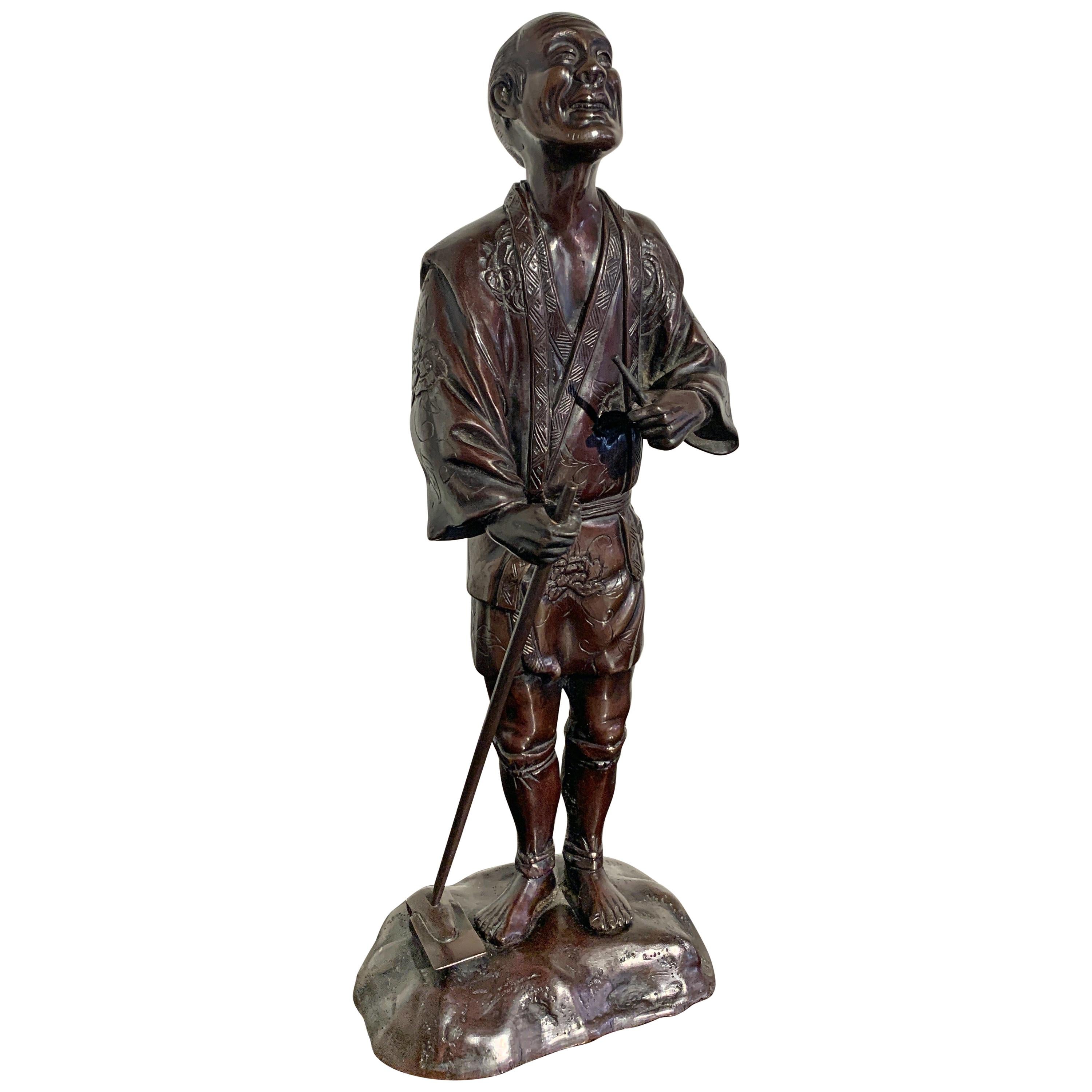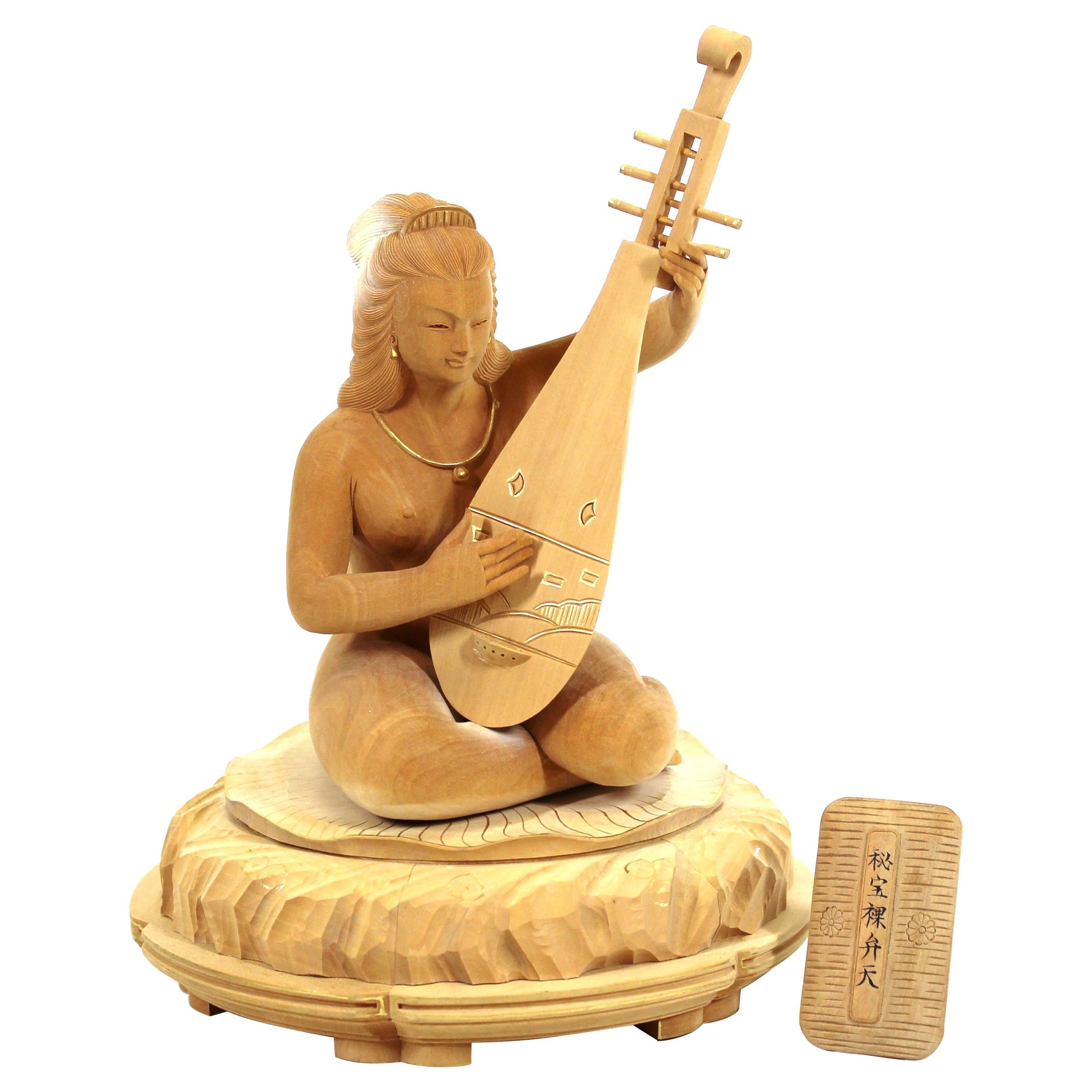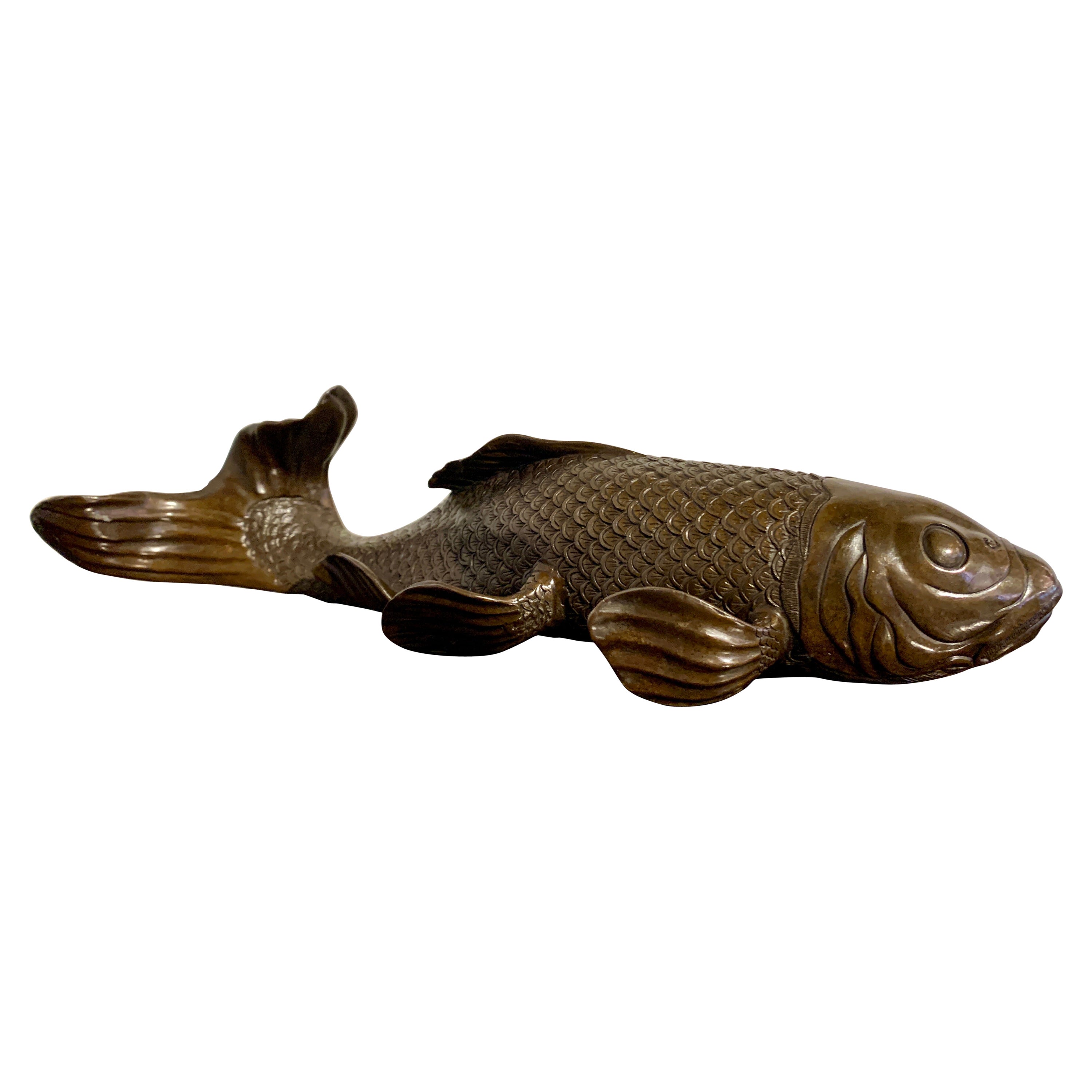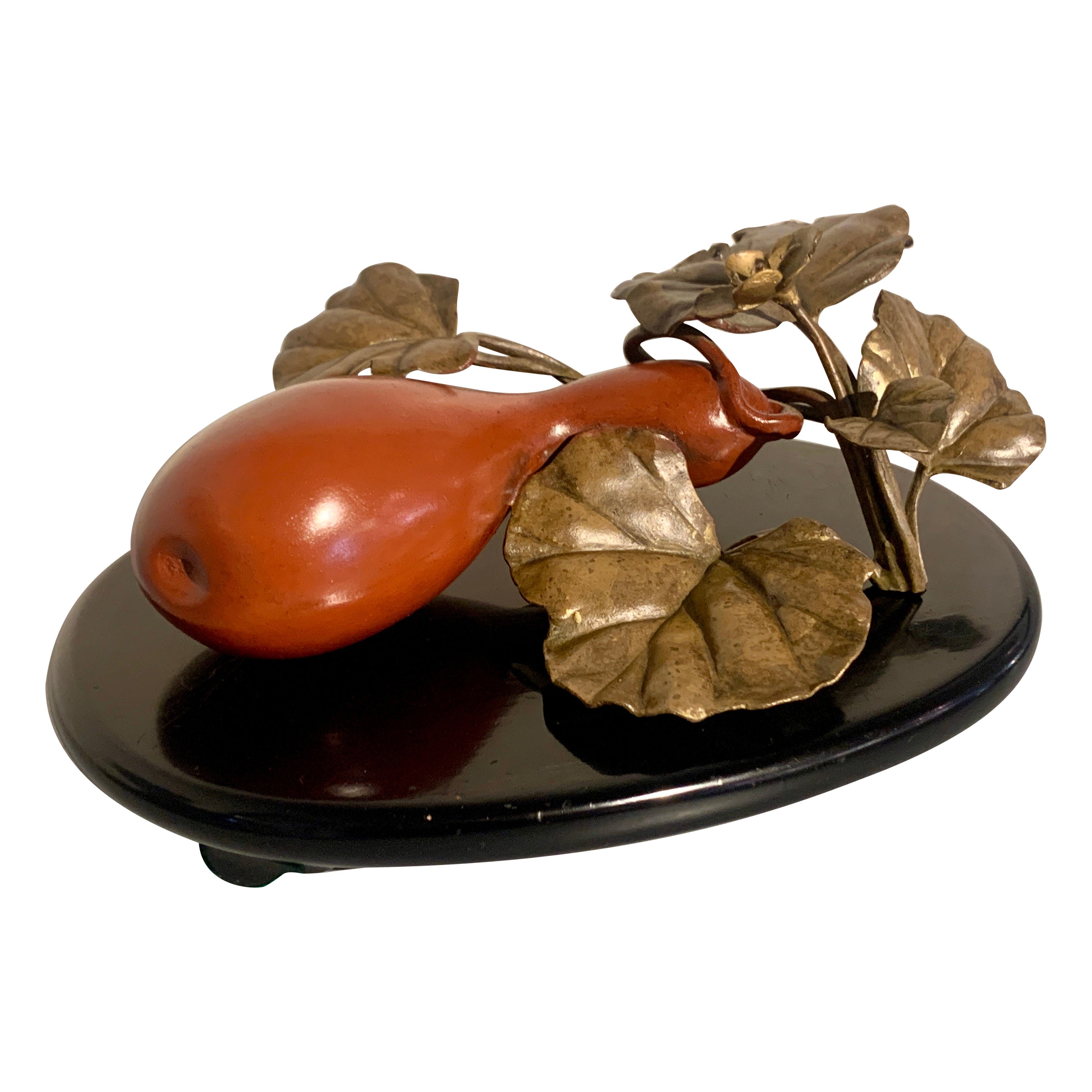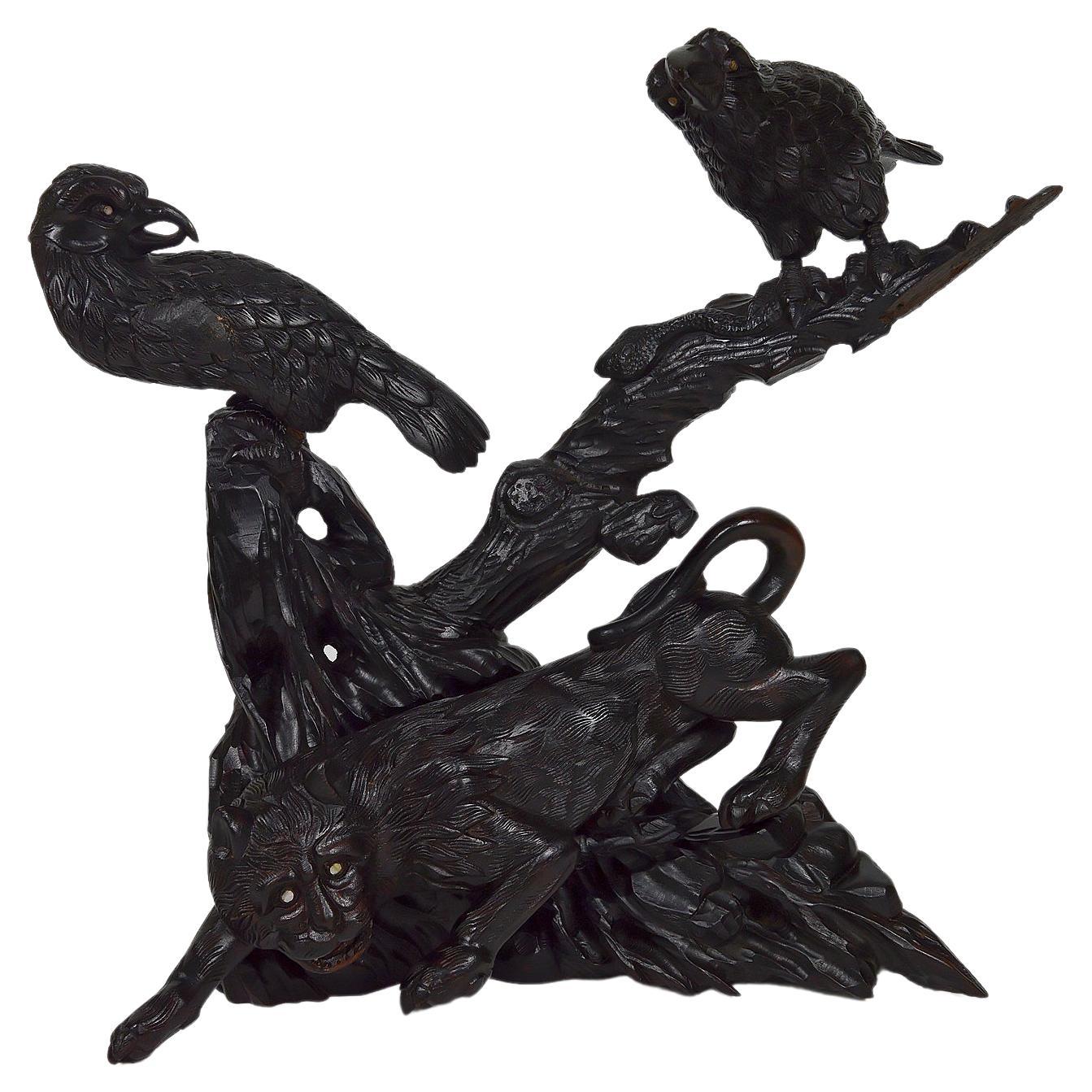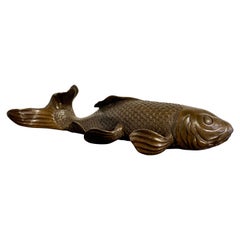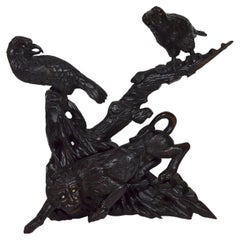
Japanese Carved Bamboo Okimono of a Tiger, Signed Ippo
View Similar Items
Want more images or videos?
Request additional images or videos from the seller
1 of 7
Japanese Carved Bamboo Okimono of a Tiger, Signed Ippo
About the Item
- Creator:Ippo (Artist)
- Dimensions:Height: 7 in (17.78 cm)Width: 5 in (12.7 cm)Depth: 4 in (10.16 cm)
- Style:Meiji (Of the Period)
- Materials and Techniques:
- Place of Origin:
- Period:
- Date of Manufacture:Late 19th Century
- Condition:Wear consistent with age and use.
- Seller Location:Austin, TX
- Reference Number:1stDibs: LU8947766774
About the Seller
5.0
Gold Seller
These expertly vetted sellers are highly rated and consistently exceed customer expectations.
Established in 2001
1stDibs seller since 2010
304 sales on 1stDibs
Typical response time: 1 hour
More From This SellerView All
- Japanese Tokyo School Bronze Okimono of a Farmer, Meiji PeriodLocated in Austin, TXA very fine and detailed Tokyo School cast bronze okimono (decorative sculpture) of a smiling farmer, Meiji period, late 19th century, Japan. The e...Category
Antique Late 19th Century Japanese Meiji Sculptures and Carvings
MaterialsBronze
- Japanese Bronze Okimono of a Carp, Taisho Period, Early 20th Century, JapanLocated in Austin, TXAn elegant Japanese cast bronze okimono of a swimming carp, Taisho Period (1912 - 1926), early 20th century, Japan. The graceful fish portrayed realistically in motion, as if swimmi...Category
Vintage 1920s Japanese Taisho Sculptures and Carvings
MaterialsBronze
- Japanese Painted Bronze Okimono of a Gourd by Toyo, Showa Era, 1960s, JapanBy ToyoLocated in Austin, TXA charming Japanese decorative bronze sculpture, okimono, of a gourd, hyotan, by Toyo Japan, Showa Era, circa 1960s, Japan. The realistic okimono, fashio...Category
Vintage 1960s Japanese Showa Sculptures and Carvings
MaterialsBronze
- Chinese Carved Bamboo Figure of a Sage, Qing Dynasty, 18th CenturyLocated in Austin, TXA sweet and lovely Chinese bamboo carving of the sage Dongfang Shuo, mid-Qing dynasty, 18th century, China. Well carved form a single section o...Category
Antique 19th Century Chinese Qing Sculptures and Carvings
MaterialsBamboo
- Japanese Carved and Lacquered Wood Shogun, Edo Period, 19th Century, JapanLocated in Austin, TXAn unusual Japanese carved wood, lacquer, and gilt decorated portrait sculpture of a shogun, Edo Period, early 19th century, Japan. The unidentified shogun (possibly Tokugawa Iey...Category
Antique Mid-19th Century Japanese Edo Sculptures and Carvings
MaterialsWood, Lacquer
- Pair Japanese Carved and Lacquered Inari Foxes, Showa Era, Dated 1951, JapanLocated in Austin, TXA delightful and mischievous pair of Japanese carved and lacquered wood Inari foxes, kitsune, dated Showa year twenty six, corresponding to 1951, Japan. T...Category
Vintage 1950s Japanese Showa Sculptures and Carvings
MaterialsElm
You May Also Like
- Japanese Meiji Period Carved Wood Okimono Man with RabbitsLocated in Newark, EnglandThe charming figure, carved from a single piece of wood is exceptionally carved showing the male figure with humorous expression holding two Rabbits one by the ears and the second under his arm. A third Rabbit stands at the feet of the male looking up, each rabbit with a different expression. The male figure is wearing traditional Japanese attire with his hair tied back stood upon a naturalistic base. The figure dates to the Meiji Period (1868-1912) circa 1900. Notes The Rabbit is one of the 12 animals to feature in the Japanese Zodiac signs which follows the Chinese astrological system along with the Rat, Ox, Tiger, Rabbit, Dragon, Snake, Horse, Goat, Monkey, Rooster, Dog, Pig. Such division is connected with the Jupiter cycle around the Sun, which lasts about 12 years. As 2023 is the year of the Rabbit...Category
Antique Early 1900s Japanese Meiji Sculptures and Carvings
MaterialsWood
- Japanese Okimono of a Shunga Lady Playing a BiwaLocated in New York, NYJapanese Heisei period wood carved okimono of a shunga lady playing a Biwa. Made during the Heisei period in circa 1990, the piece remains in remarkable vintage condition with age-ap...Category
1990s Japanese Modern Sculptures and Carvings
MaterialsWood
- Asian Sculpture / Okimono with Lion and Crows, Japan, Meiji Era, circa 1880Located in VÉZELAY, FRRare and important Japanese sculpture / statue / okimono in blackened and carved wood, depicting 1 lion, 2 birds (crows or other birds of prey) and 1 snake held in the claws of one o...Category
Antique 1880s Japanese Meiji Sculptures and Carvings
MaterialsWood
$2,430 Sale Price20% Off - Japan 1890 Meiji Period Rare Carved Okimono Of A Father And Son Playing SignedLocated in Miami, FLJapanese Okimono sculpture of a father and son. Very rare and highly detailed sculpture, created during the meiji period (1868-1912) in the imperial Japan, circa 1890. This sculptural Okimono is very well realized and exceptionally proportionate. Show the figures of a father and a son playing, with happiness and smiling. The father hold a big basket at his back and both personages are wearing kimonos richly engraved. This piece was made from a carving with exceptional craftsmanship and intricate details. This sculpture stand itself on his own base and have all retain of the applied ochre ink accents. Measures: 130 mm by 45 mm by 53.3 mm (5.1 x 1.75 x 2.1 inches). Weight: 81.30 grams. Note: This kind of family scene is very rare to seen in nineteenth century japanese iconography. Okimono Is a Japanese term meaning for display an ornament; art object; or decorative object, usually displayed in a tokonoma or butsudan "Buddhist altar". It is an ornament or figure, especially one placed in a guest room. An okimono may be a small Japanese carving, similar to but larger than a netsuke. Unlike the netsuke, which had a specific purpose, the okimono is exclusively decorative and was displayed in the tokonoma. During the Meiji period, many okimonos were made for export to the West. Meiji Period This is an era of Japanese history that extended from October 23, 1868 to July 30, 1912.The Meiji era was the first half of the Empire of Japan, when the Japanese people moved from being an isolated feudal society at risk of colonization by Western powers to the new paradigm of a modern, industrialized nation state and emergent great power, influenced by Western scientific, technological, philosophical, political, legal, and aesthetic ideas. As a result of such wholesale adoption of radically different ideas, the changes to Japan were profound, and affected its social structure, internal politics, economy, military, and foreign relations...Category
Antique 1890s Japanese Meiji Sculptures and Carvings
MaterialsWood, Paint
$1,800 Sale Price20% Off - Meiji Period Carved Lion and TigerLocated in Pasadena, CAThis is an outstanding pair of Meiji Period carved hardwood figures of a ferocious lion and tiger. The carving is exceptional as is the bone detailing of the mouthes and teeth. The f...Category
Antique Late 19th Century Japanese Meiji Animal Sculptures
MaterialsBone, Hardwood
$2,750 / set - Japan 1890 Meiji Period Signed Okimono Sculpture of a Group of Skeletons SmokingLocated in Miami, FLSculptural signed Okimono from the Japanese Meiji period (1868-1912). Very rare, unusual and large sculptural assembling of a dysplaying piece of okimono. Created in Japan during the imperial period of the Meiji (1868-1912). This extraordinary okimono was carefully carved depicting a group of three intricately and realistically rendered carousing skeletons (Gaikotsu) in relax and resting position, drinking and smoking. Two of them, probably males representations are resting on a wicker sofa. The third, is a woman seated in a lower stool offering drinking cups of sake on a round tray. A small rectangular bench is arranged in the scene. The composition is displayed on a four-legged carved wood platform with an inlaid red plaque engraved with the artist's signature. The level of detail and the quality of the carving is truly exceptional. Has an exact measurements of 209.55 mm by 196.85 mm by 127.76 mm (8.25 x 7.75 x 5.03 Inches). After an extensive collection of data, comparables and references to this piece, we have only been able to find only three okimono sculptures like this with similar themes and the same quality of work. References Note: A similar carving of four skeletons playing an animated game of dominos, signed Shutaro in an inlaid rectangular red plaque, was sold in London by Christie’s South Kensington in October 14 2014, Lot 120 Sale 5546. References Note: A similar carving with four skeletons in an otherwise typical victorian scene of a photographer and three sitters signed Shutaro in an inlaid rectangular red plaque, was sold in Edinburgh at Lyon & Turnbull in November 7, 2018. References Note: A similar carving with five skeletons seated, playing cards and drinking, was sold in London by John Nicholson Fine Art on September 26, 2018. Meiji period, is an era of Japanese history that extended from October 23, 1868 to July 30, 1912. The Meiji era was the first half of the Empire of Japan, when the Japanese people moved from being an isolated feudal society at risk of colonization by Western powers to the new paradigm of a modern, industrialized nation state and emergent great power, influenced by Western scientific, technological, philosophical, political, legal, and aesthetic ideas. As a result of such wholesale adoption of radically different ideas, the changes to Japan were profound, and affected its social structure, internal politics, economy, military, and foreign relations. The period corresponded to the reign of Emperor Meiji. It was preceded by the Keio era and was succeeded by the Taisho era, upon the accession of Emperor Taisho. Okimono, is a Japanese term meaning for display an ornament; art object; or decorative object, usually displayed in a tokonoma or butsudan "Buddhist altar". It is an ornament or figure, especially one placed in a guest room. An okimono may be a small Japanese...Category
Antique 1890s Japanese Meiji Sculptures and Carvings
MaterialsWood
Recently Viewed
View AllMore Ways To Browse
Tiger And Bamboo
Tiger Carving
Japanese Okimono
Tiger Carving Sculpture
Meiji Okimono
Meiji Tiger
Antique Honey Sign
Tigers Teeth
Japanese Leopard
Used Container Ship
19th Jade
Antique Ship Arts
Antique Ricer
High Relief Carving
Antique Chinese Lantern
Antique Chinese Lantern Antiques
Antique Chinese Lanterns
Asian Wood Figure

